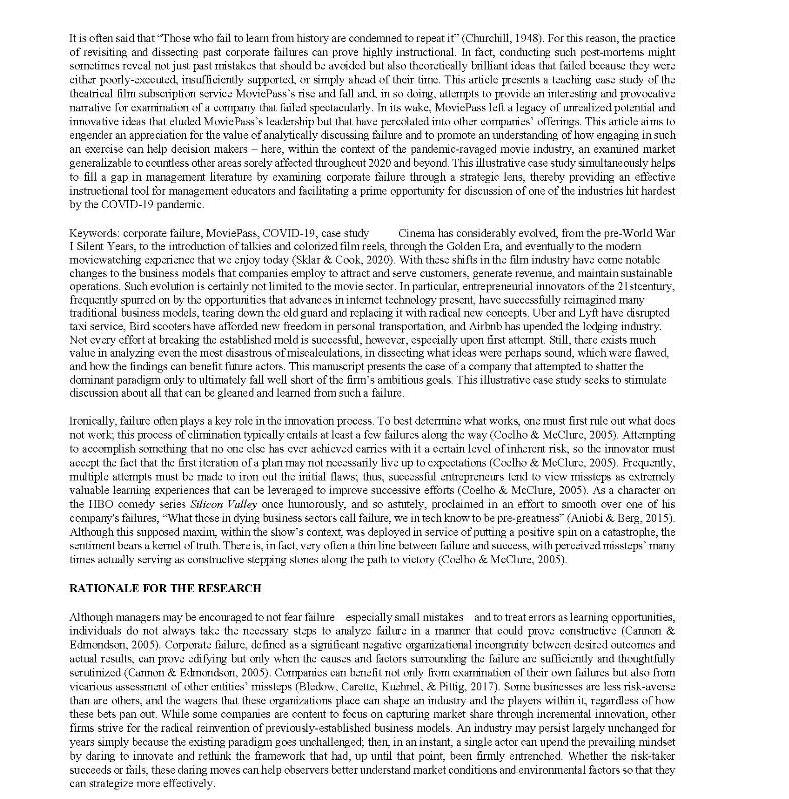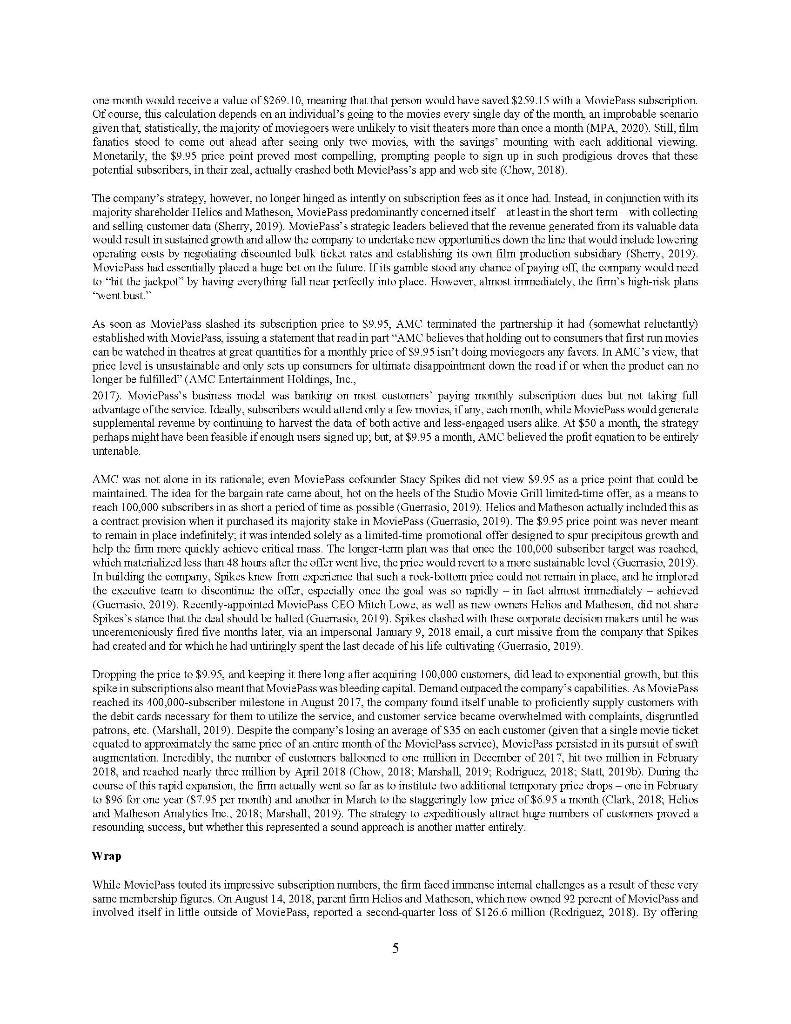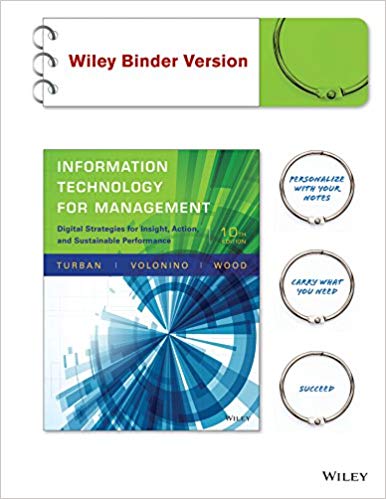How can entities involved in the movie industry learn from the adjustments that companies were forced to make during the COVID-19 pandemic? In your response,








How can entities involved in the movie industry learn from the adjustments that companies were forced to make during the COVID-19 pandemic? In your response, consider how online video streaming services presented movie studios with new opportunities. Specifically, what can be learned from the way that companies pivoted as a result of a changing global environment, with Universal’s shortening theatrical windows, Disney’s launching Disney Premiere Access on its Disney+ streaming service, and Warner Bros.’s releasing its entire slate of 2021 films day-and-date on the HBO Max streaming service as well as in theaters?
It is often said that "Those who fail to learn from history are condemned to repeat it" (Churchill, 1948). For this reason, the practice of revisiting and dissecting past corporate failures can prove highly instructional. In fact, conducting such post-mortems might sometimes reveal not just past mistakes that should be avoided but also theoretically brilliant ideas that failed because they were either poorly-exccuted, insufficiently supported, or simply ahead of their time. This article presents a teaching case study of the theatrical film subscription service MoviePass's rise and fall and, in so doing, allermpts to provide an interesting and provocative narrative for examination of a company that failed spectacularly. In its wake, MoviePass left a legacy of unrealized potential and innovative ideas that cluded Movie Pass's leadership but that have percolated into other companies offerings. This article aims to engender an appreciation for the value of analytically discussing failure and to promote an understanding of how engaging in such an exercise can help decision makers - here, within the context of the pandemic-ravaged movie industry, an examined market generalizable to countless other areas sorely affected throughout 2020 and beyond. This illustrative case study simultaneously helps to fill a gap in management literature by examining corporate failure through a strategic lens, thereby providing an effective instructional tool for management educators and facilitating a prime opportunity for discussion of one of the industries hit hardest by the COVIT-19 pandernic. Keywords: corporate failure, MoviePass, COVID-19, case study Cinema has considerably evolved, from the pre-World War I Silent Years, to the introduction of talkies and colonized film reels, through the Golden Era, and eventually to the modern movicwatching experience that we enjoy today (Sklar & Cook, 2020). With these shifts in the film industry have come notable changes to the business models that companies employ to attract and serve customers, generate revenue, and maintain sustainable operations. Such evolution is certainly not limited to the movie sector. In particular, entrepreneurial innovators of the 21st century, frequently spurred on by the opportunities that advances in internet technology present, have successfully reimagined many traditional business models, tearing down the old guard and replacing it with radical new concepts. Uber and Lyft have disrupted taxi service, Bird scooters have afforded new freedom in personal transportation, and Airbnb has upended the lodging industry. Not every effort at breaking the established mold is successful, however, especially upon first attempt. Still, there exists much value in analyzing even the most disastrous of miscalculations, in dissecting what ideas were perhaps sound, which were flawed. and how the findings can benefit future actors. This manuscript presents the case of a company that attempted to shatter the dominant paradigm only to ultimately fall well short of the firm's ambitious goals. This illustrative case study seeks to stimulate discussion about all that can be gleaned and learned from such a failure. Ironically, failure often plays a key role in the innovation process. To best determine what works, one must first rule out what does not work, this process of climination typically entails at least a few failures along the way (Coelho & McClure, 2005). Attempting to accomplish something that no one clsc has ever achieved carries with it a certain level of inherent risk, so the innovator must accept the fact that the first iteration of a plan may not necessanly live up to expectations (Coelho & McClure, 2005). Frequently, multiple attempts must be made to iron out the initial flaws; thus, successful entrepreneurs lend to view missteps as extremely valuable learning experiences that can be leveraged to improve successive efforts (Coelho & McClure, 2005). As a character on the IIBO comedy series Silicon Valley once humorously, and so astutely, proclaimed in an effort to smooth over one of his company's failures, "What those in dying business sectors call failure, we in tech know to be pre-greatness" (Aniobi & Berg. 2015). Although this supposed maxim, within the show's context, was deployed in service of putting a positive spin on a catastrophe, the sentiment beans a kemel of truth. There is, in fact, very often a thin line between failure and success, with perceived missteps' many times actually serving as constructive stepping stones along the path to victory (Coelho & McClure, 2005). RATIONALE FOR THE RESEARCH Although managers may be encouraged to not fear failure especially small mistakes and to treat errors as learning opportunities, individuals do not always take the necessary steps to analyze failure in a manner that could prove constructive (Cannon & Edmondson, 2005), Corporate failure, defined as a significant negative organizational incongruity between desired outcomes and actual results, can prove edifying but only when the causes and factors surrounding the failure are sufficiently and thoughtfully serulinized (Cannon & Edmondson, 2005). Companies can benefit not only from examination of their own failures but also from vicarious assessment of other entities' missleps (Bledow, Carelle, Kuchnel, & Pillig, 2017). Some businesses are less risk-averse than are others, and the wagers that these organizations place can shape an industry and the players within it, regardless of how these bets pan out. While some companies are content to focus on capturing market share through incremental innovation, other firms strive for the radical reinvention of previously-established business models. An industry may persist largely unchanged for years simply because the existing paradigm goes unchallenged; then, in an instant, a single actor can upend the prevailing mindset by daring to innovate and rethink the framework that had, up until that point, been firmly entrenched. Whether the risk-taker succeeds or fails, these daring moves can help observers better understand market conditions and environmental factors so that they can strategize more effectively.
Step by Step Solution
3.49 Rating (159 Votes )
There are 3 Steps involved in it
Step: 1
Solution For CG of area 7x dx dy Jfdx dy y dy fx dx y dy 0 So dx fla 5x dx a3332 dx ...
See step-by-step solutions with expert insights and AI powered tools for academic success
Step: 2

Step: 3

Ace Your Homework with AI
Get the answers you need in no time with our AI-driven, step-by-step assistance
Get Started


